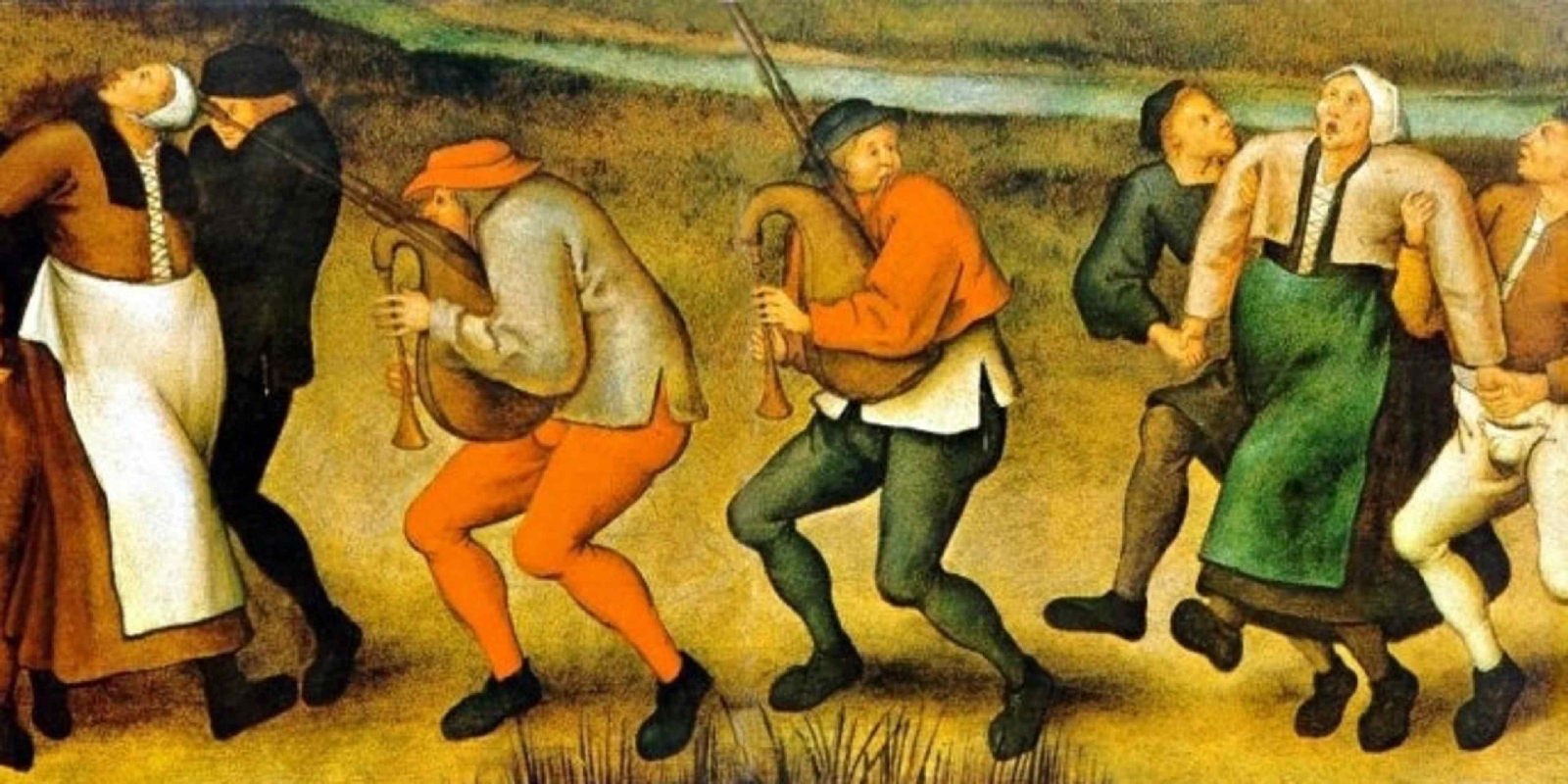Mass Hysteria
Mass Hysteria
Mass hysteria also called mass psychogenic illness (MPI), defined as a social phenomenon, consists of collective anxiety due to a perceived threat and can culminate in a cascade of symptoms suggestive of organic disease without an identifiable cause. Its history dates back to the 14th century and impacts people from all cultures and regions of the world. Before the 20thcentury, MPI emerged across Europe, often in socially isolated convents, in highly stressful environments.
The Dancing Plague 1518
In the summer of 1518, a woman named Frau Troffea began dancing in the streets of Strasbourg, France. Soon, others joined, and within weeks, hundreds were dancing relentlessly, sometimes for days, some to the point of exhaustion or death.
Causes and Contributing Factors:
Mass Hysteria (Psychogenic Illness): Many historians believe the dancing was a form of mass hysteria, a psychological phenomenon where a group of people share a belief or experience, often triggered by stress or anxiety.
Ergot Poisoning: Some theories suggest ergot, a fungus that can grow on rye, may have played a role. Ergot can cause hallucinations and muscle spasms, potentially contributing to the dancing.
Stress-Induced Psychosis: The region was experiencing famine and disease, leading to high levels of stress and anxiety, which may have manifested as mass psychosis.
Cultural Contagion: The idea of a "curse" from St. Vitus, who was believed to cause involuntary dancing, may have spread through the population, leading to more people joining the phenomenon.
Salem Witch Trials 1692
The Salem Witch Trials were a series of hearings and prosecutions of people accused of witchcraft in colonial Massachusetts between February 1692 and May 1693. More than 200 people were accused, and 20 were executed by hanging, along with five others who died in jail. The trials are a stark example of religious extremism, mass hysteria, and the dangers of unfounded accusations.
Causes and Contributing Factors:
The trials are attributed to a complex mix of factors, including:
Religious Extremism: A strict Puritanical worldview fueled fear of the devil and his influence.
Social and Political Tensions: Local disputes and power struggles within the community contributed to the climate of suspicion.
Mass Hysteria: The girls' initial symptoms, possibly exacerbated by factors like ergot poisoning or psychological stress, triggered a wave of fear and accusations.
June Bug Epidemic 1962
The June Bug Epidemic of 1962 was a case of mass psychogenic illness, also known as mass hysteria, that occurred at a textile factory in the United States.
A group of 62 workers at a dressmaking factory in a Southern US textile town reported experiencing symptoms like nausea, numbness, dizziness, and skin rashes.
The workers believed the symptoms were caused by insects, particularly "June bugs," that they thought had come in with a fabric shipment.
Entomologists and other experts were called in to investigate, but they found no evidence of any insect or arachnid that could cause the reported symptoms.
Causes and Contributing Factors :
Mass Hysteria:
Health officials concluded that the outbreak was a case of mass psychogenic illness, driven by anxiety and stress. Many workers reported high levels of stress in their lives, and the fact that the symptoms spread quickly, especially among those in close proximity, suggested a psychological rather than physical cause.
Poor work enviroment
The factory was recently opened, busy, and poorly organized, contributing to a stressful work environment. Additionally, media coverage of the initial cases likely amplified the anxiety and spread the symptoms.
Compiled by
Ms Naresh Kuwar



Comments
Post a Comment